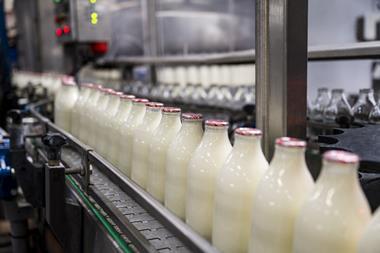Supermarkets are getting serious about autonomous delivery vehicles. Today Asda announced it is soon to start trialling self-driving vans in London in the hope, according to its online chief Simon Gregg, it will “help us develop the most sustainable last-mile solutions for our business”.
Ocado earlier this year announced it was partnering with Oxford-based autonomous vehicle software company Oxbotica – along with a £10m funding injection – with an eye on driverless “last-mile deliveries and kerb-to-kitchen robots”. Wilko earlier this month invested £3m in autonomous delivery company StreetDrone.
The government is getting serious, too. As well as £400m of co-investment into self-driving tech companies, and the establishment of £200m self-driving ‘test bed’ facilities across the UK, it has introduced policies to create what it says is “one of the most welcoming regulatory environments” for autonomous vehicle testing.
So will a supermarket van without a driver be pulling up at our doors any day now?
Not quite. The most bullish estimates still puts the possibility a few years away. That’s despite investors having poured around $100bn into bringing self-driving cars to market since 2010, according to McKinsey.
“To put that figure into perspective, it’s about a third of what was spent on Project Apollo to put a man on the moon,” writes Jeff Hawke, tech chief of Asda’s self-driving tech partner Wayve. “Despite significant efforts by some of the world’s largest tech and automotive companies, the problem of self-driving remains unsolved.”
While swarms of small bots like those made by Starship are delivering groceries for Co-op in Milton Keynes and Northampton, they are restricted to the pavements and only let loose after months of manual testing and mapping.
There’s a big difference between being able to navigate a 25kg robot down the quiet pavements of Milton Keynes and getting a 3.5 tonne van through central London traffic to a customer’s door.
Even some of the most advanced driver assistance tech – offered by the likes of Tesla – can help drivers safely change lanes on a motorway and stop at a red light, but can’t get from A to B completely hands-free. Indeed, the US National Transportation Safety Board has raised concerns over Tesla’s coming launch of ‘Full Self-Driving’ beta software.
Nevertheless, the technology is advancing fast. Wayve is taking a different approach to many, and instead of relying on ‘HD maps and hand-coded rules’, is taking ‘a pure AI approach’. It’s a method that has seen successful drives in the highest-density areas of London, the company claims. StreetDrone aims to deploy autonomous delivery vehicles by the end of 2023, though it’s not clear if this was as part of trials.
Computer controlled HGVs – or at least ones with robots able to take the wheel during the boring motorway stretches – could arrive even sooner.
There will be bumps in the road. But the backing of major UK retailers – be it through cash or, as Wayve CEO Alex Kendall describes it, “an ideal first use case” – will only help speed up the arrival of driverless grocery delivery.




















No comments yet